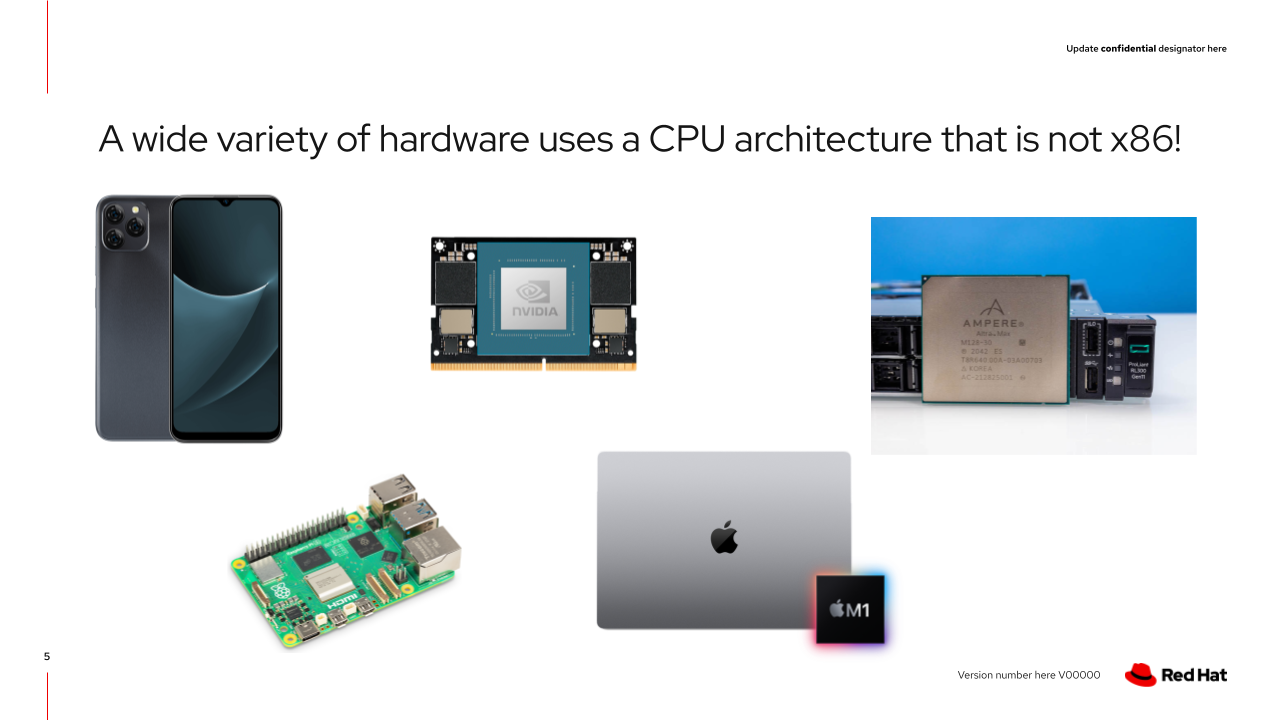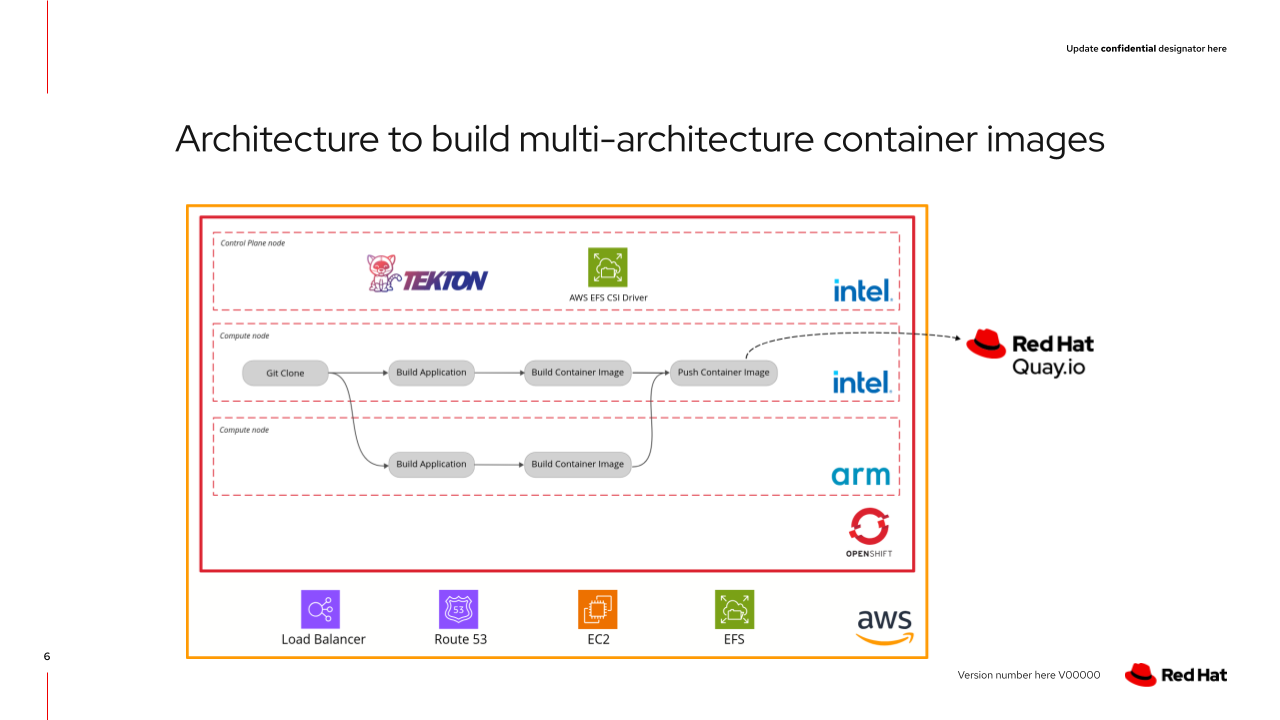Red Hat Open Demo: Red Hat Open Demo-Build multi-architecture CI/CD pipelines to run your apps in the cloud and at the Edge!
On September 5, 2024, I presented a webinar named Red Hat Open Demo-Build multi-architecture CI/CD pipelines to run your apps in the cloud and at the Edge!, based on the technology intelligence I have gone through in the past months.
In the rapidly advancing field of edge computing, deploying applications across diverse hardware platforms, such as ARM and x86_64, has become essential. Multi-architecture container images have emerged as a powerful solution, supporting multiple processor architectures within a single image package and simplifying the deployment process across platforms.

During this demonstration, I explored how these multi-architecture images work seamlessly across different CPU architectures, automatically selecting the appropriate client architecture from a registry. Using tools like Podman, Buildah, and Tekton, I showcased how easy it is to build these images. Additionally, I demonstrated the robust support for multi-architecture CI/CD pipelines offered by platforms like Red Hat OpenShift on AWS.
Here’s what was covered during the demo:
Overview of Use Cases: I began with a comprehensive overview of scenarios where multi-architecture support is critical, especially in edge and hybrid cloud environments.
Running OpenShift on AWS in Multi-Architecture Mode: Participants saw OpenShift running in a multi-architecture setup on AWS, showcasing its flexibility in supporting nodes with multiple CPU architectures.
Persistent Storage for CI/CD Pipelines (AWS EFS): I explored the AWS Elastic File System (EFS) as a possible solution for persistent storage within CI/CD pipelines, for managing artifacts across nodes.
Multi-Architecture Pipelines for Quarkus, NodeJS, and Buildah: The demo included a hands-on look at creating pipelines that support multiple architectures, focusing on Quarkus, NodeJS, and raw Containerfile with Buildah. This allowed participants to understand how to structure pipelines for a wide range of application types.
Tekton Task Binding to the Right Node: I also demonstrated how Tekton tasks could be directed to specific nodes based on architecture, ensuring efficient execution across mixed environments.

Key Highlights from the Demo:
Live Demonstration of an OpenShift Cluster with Mixed Architecture Nodes: The highlight was the live showcase of an OpenShift cluster featuring ARM and x86_64 nodes, which enabled participants to observe multi-architecture functionality in real-time.
Hands-on Session on Tekton Pipelines: Attendees took part in a practical session focused on creating and managing Tekton pipelines for multi-architecture builds, covering both foundational setup and advanced configurations.
Building and Pushing Multi-Architecture Container Images to quay.io: I concluded with a real-time demonstration of building and pushing multi-architecture images to the quay.io registry, emphasizing the role of registry support in deploying cross-platform applications efficiently.
Running the same container on two different CPU architectures: I ran a container image built with the multi-architecture pipeline on both my Laptop (x86_64) and my Ampere Altra server (ARM64).
This demo has been designed for DevOps professionals, cloud architects, and developers looking to leverage OpenShift and AWS in multi-architecture container image creation. The session provided them with both a high-level understanding and practical skills to implement and manage these capabilities in their environments.
If you have not been able to attend the live session, I invite you to watch the replay and download the slides!
If you are ready to dive deeper, have a look at the article I wrote on this subject: Construction d'images de conteneur multi-architecture avec OpenShift, Buildah et Tekton dans le cloud AWS !